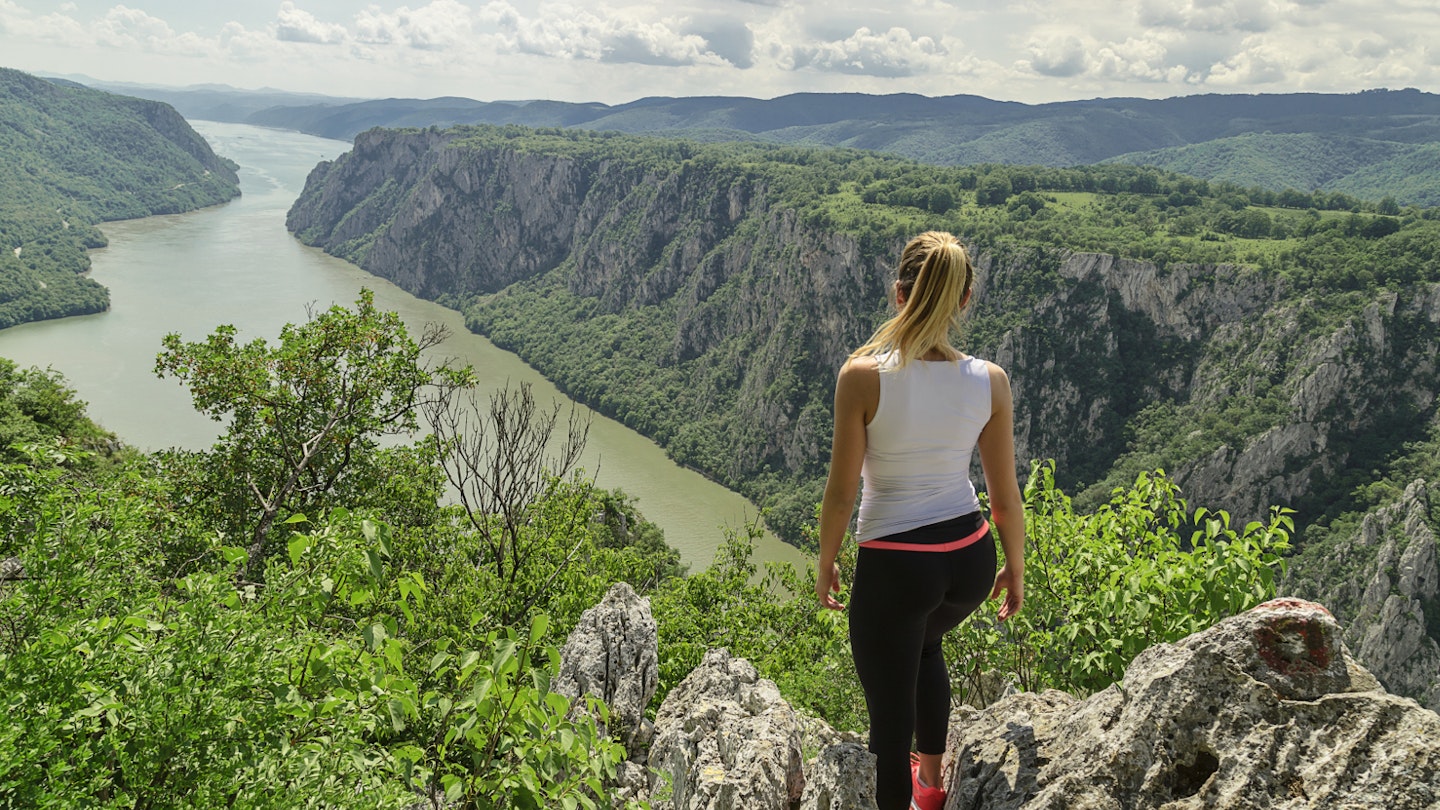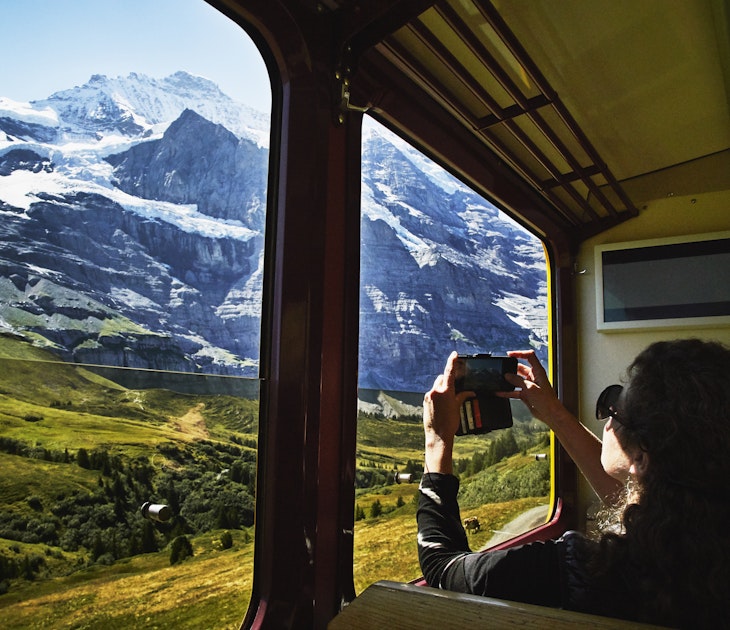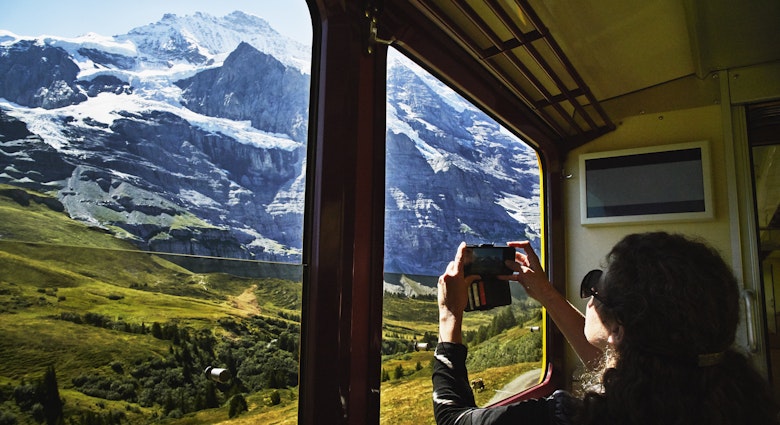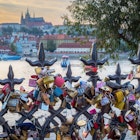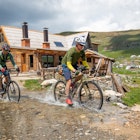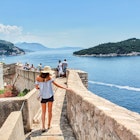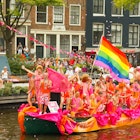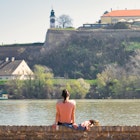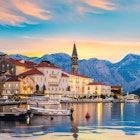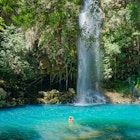So you did your sightseeing, dining and partying in Belgrade. What next? Consider taking a day trip from the Serbian capital to hike the nearby gentle mountains, cruise through centuries of history, take in some outlandish art, or enjoy local drops from family wine cellars.
The following excursions ensure you’ll experience Serbia’s authentic vibe, only a couple of hours’ drive away from Belgrade’s urban buzz. They can be easily done by car, bus, train and even boat. Extra tip for a day trip: explore the baroque town of Vršac and Deliblato Sands with Zagajička Hills, one hour northeast from the capital.
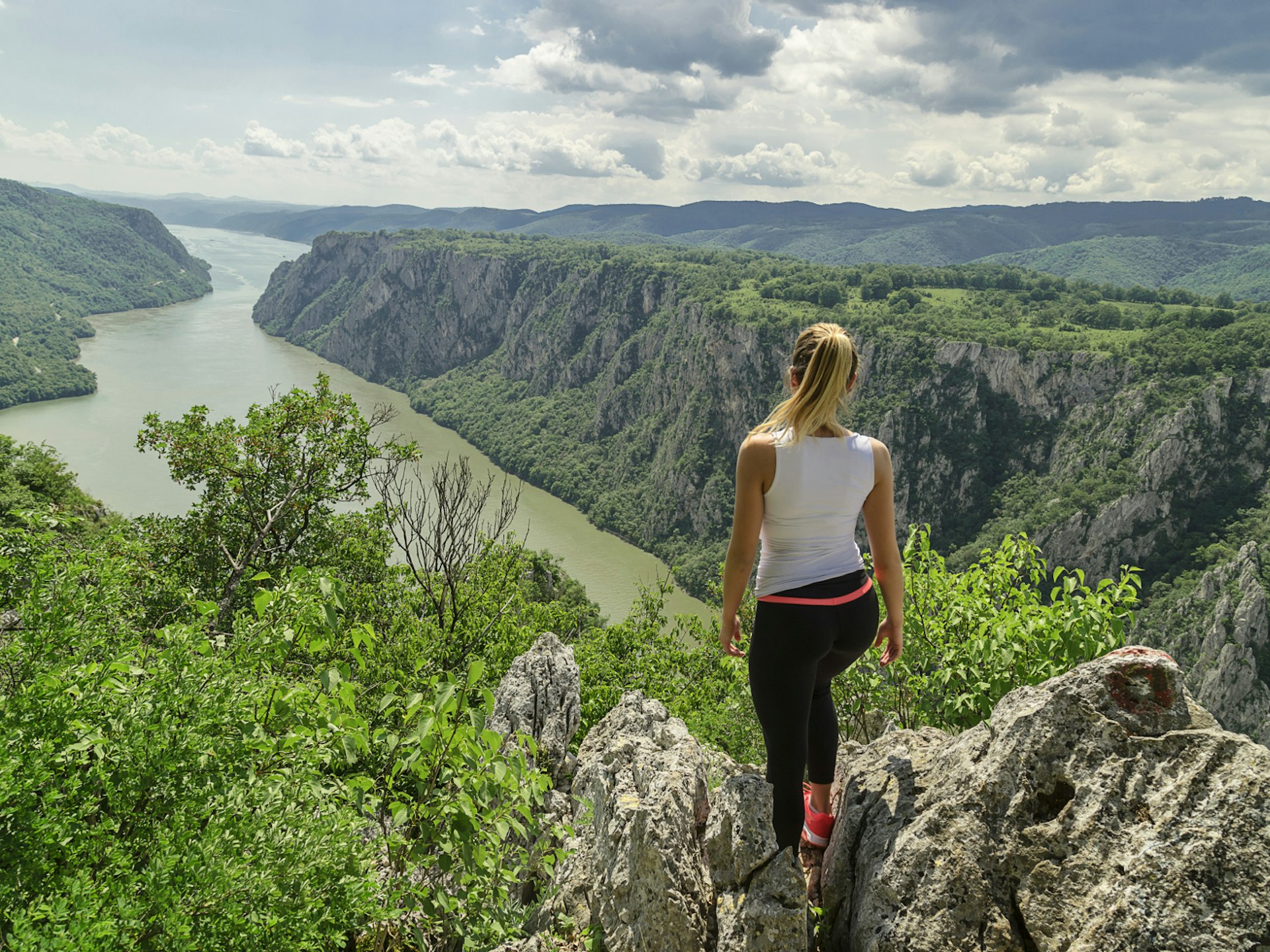
Down the Danube
The Danube River has been the lifeline for many civilisations throughout history. The section that runs from Belgrade to the east, towards Romania, boasts a few jewels from the prehistoric, Roman and medieval periods.
Following the traces of the Roman Empire in the Danube valley, you’ll find the ancient city and legionary fort of Viminacium located halfway between the Smederevo and Golubac fortresses. At this large archaeological park you can visit the remains of a Roman public bath, amphitheatre and mausoleum, try a Roman-style breakfast, but also see a giant skeleton of a one-million-year-old mammoth.
Continuing further down the river, the admirable Golubac Fortress greets you with its 10 towers that have seen too many battles as different peoples fought over it from the Middle Ages onwards. The fortress is undergoing a major reconstruction and will soon be ready for visitors to climb the ancient ramparts and snap photos with impressive Danube views.
Past the Golubac Fortress, you enter the Djerdap National Park and the imposing cliffs of the Iron Gates gorge. A 7000-year-old fishing settlement of Lepenski Vir was created in this challenging environment and is famous worldwide for its little fish-like stone head sculptures. Afterwards head towards the town of Donji Milanovac to enjoy the stunning view of the Djerdap gorge and traditional Vlach cuisine at Kapetan Mišin Breg ‘eco-ethno complex’.
Getting there: From spring to autumn bus and boat tours operate between Belgrade and Donji Milanovac, or you can get around by car.

Offbeat art
On the banks of the Danube, only 20km upstream from Belgrade, Novi Banovci is the most unexpected location for the avant-garde Macura Museum. At complete odds with its surroundings – it’s housed inside a modernist block building on a farm – the eccentric living-like space is filled with art pieces including examples of zenitism, yugo-dada, Belgrade surrealism and Vojvodinian neoavant-garde. The museum is a dream come true of its owner Vladimir Macura who can often be found at the property.
A very different art tradition awaits at the village of Kovačica, 45km northeast from Belgrade. This colourful little community generated a whole lineage of self-taught painters whose original works can be seen and bought at the Kovačica Naive Art Gallery. Also stop by the workshop of the well-known violin maker Jan Nemček to learn how wood turns into magical music.
Later, contemplate your alternative-art excursion at Salaš Ćuran, one of the numerous salaši (farmsteads) dotted around the northern Vojvodina region. Here you can enjoy a traditional wholesome meal and hang out with ponies at the mini-zoo.
Getting there: If you’re not driving, take bus 706 from Zeleni Venac Market to Batajnica, then bus 700 to Novi Banovci. Daily buses operate from Belgrade’s Dunav Station to Kovačica.
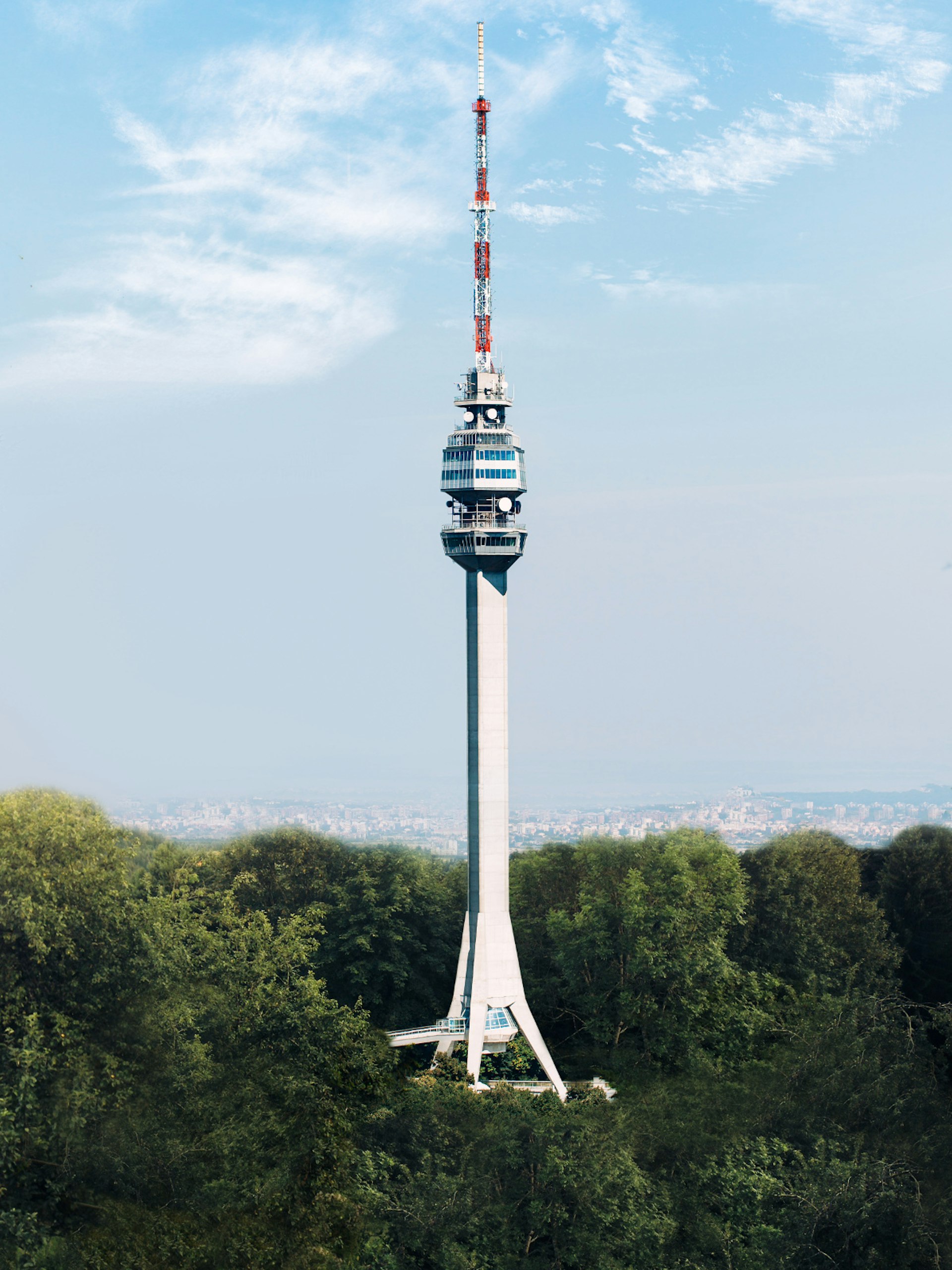
Mountain views
Whichever way you approach Belgrade, Mt Avala and its tall broadcasting tower are unmissable landmarks. A stone’s throw from the city (16km), Avala is the perfect quick getaway for picnic lovers. The tower’s viewing platform is open for visitors and you’ll be rewarded with an impressive panorama of Belgrade and the lowlands spreading towards the north and south. Be sure to check out the mausoleum-like Monument to the Unknown Hero, a WWI memorial by renowned Yugoslav sculptor Ivan Meštrović situated at the top of the mountain.
A bit further south, roughly 40km from the city, Mt Kosmaj offers plenty of opportunities for hiking and cycling, as well as a few 600-year-old monasteries and the alien-like Monument to the Kosmaj Partisans from WWII, one of the best examples of modernist spomenik (memorial) architecture in the former Yugoslavia. Descending towards the nearby town of Sopot, a perfect way to end this day trip is by visiting Kabinet Brewery and tasting some of the finest Serbian craft beers.
Getting there: It’s a 30-minute drive to Avala and under an hour to Kosmaj. From May to September bus 400 runs to the top of Avala from the Voždovac stop in Belgrade.
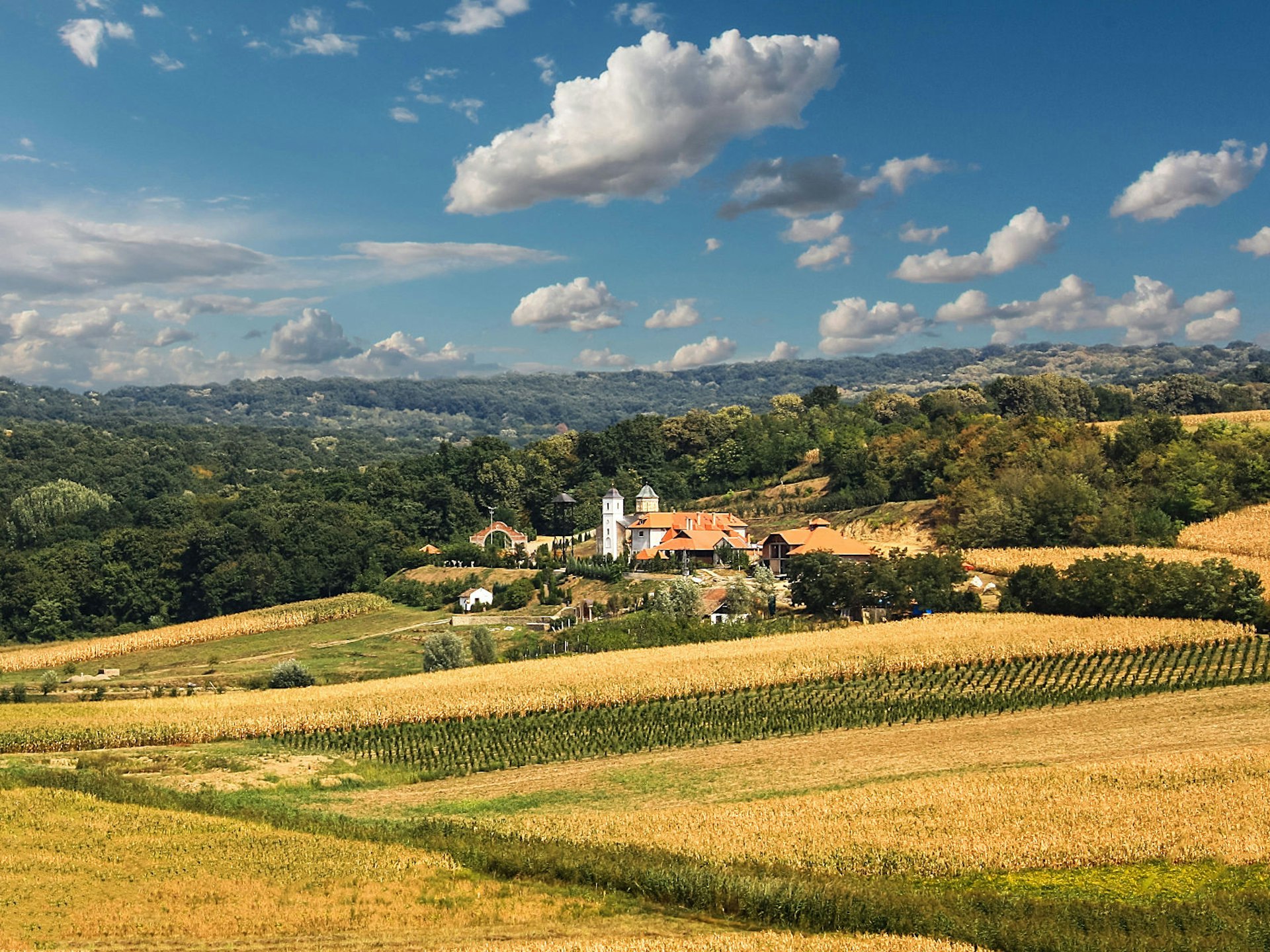
Winery hopping
The first stop on a hedonistic day trip would have to be in Sremski Karlovci, a historical town at the base of the Fruška Gora National Park in Vojvodina region. Take a leap back to the baroque epoch and visit the St Nicholas Orthodox cathedral, the Four Lions fountain and the Chapel of Peace. After that, trying the famous local dessert wine bermet at the Four Lions Restaurant or Museum of Beekeping & Wine Cellar is a must.
As you climb the gentle slopes of the Fruška Gora National Park, first find your way to some of the 16 Orthodox monasteries scattered around the mountain, such as Krušedol, Novo Hopovo or Velika Remeta. Next, satisfy your thirst as well as appetite at Kovačević Winery, which offers a few degustation packages of their reds and whites, paired with a full tour of the wine cellars.
More wine? There are 60 wineries in this region but if you have enough time, on your way back you can still visit the Petrovaradin Citadel on the Danube and go for a quick stroll around laid-back Novi Sad, Serbia’s second city.
Getting there: Hop on the tourist train ‘Romantika’ to Sremski Karlovci in summer, catch a bus to Novi Sad, or join one of the private tours.
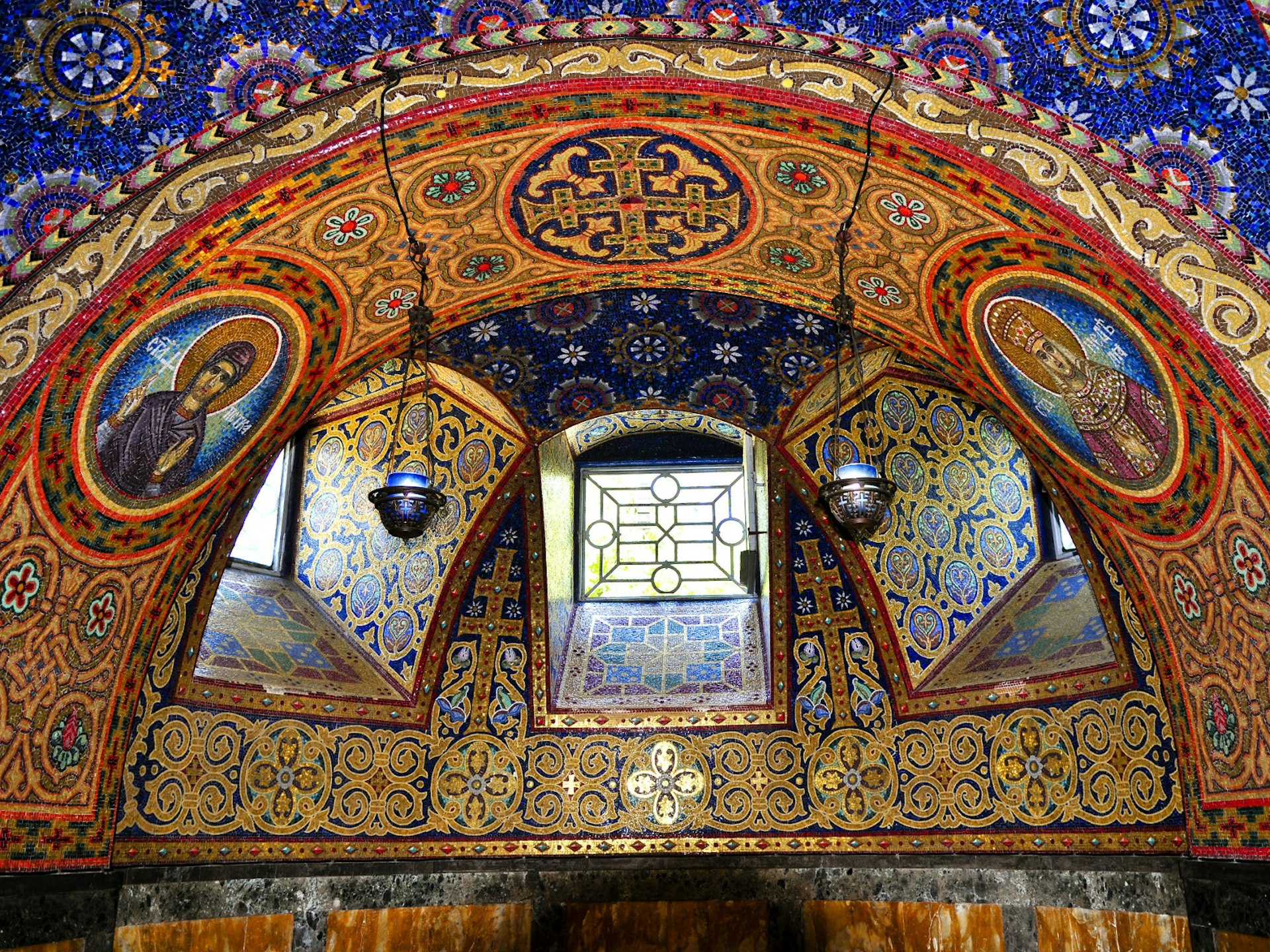
Royal retreat
Head south to Šumadija region, Serbia’s historic heartland, to visit the magnificent Oplenac Royal Complex in Topola and learn about the First Serbian Uprising against the Turks led by Karađorđe (the founder of the royal dynasty) in the early 19th century. The Church of St George dominates the complex with its stunning mosaics made of 40 million pieces of coloured glass (as well as Karađorđe’s mausoleum), while the site museum is situated in Karađorđe’s former house. The King’s Winery also forms part of the complex, and traditional royal recipes are still in use at Aleksandrović Winery.
After sightseeing, go for lunch at the ‘ethno tavern’ Karađorđev Vajat in the nearby village of Orašac. Maybe you’ll want to spend the rest of the day rejuvenating at the Aranđelovac spa resort, or continue towards the 15th-century Manasija Monastery near the town of Despotovac.
One of the most significant monuments of Serbian medieval culture, fortified Manasija is a candidate for Unesco’s World Heritage List due to its remarkable pre-Renaissance fresco art as well as formidable surrounding walls and towers. From Manasija, head back to Despotovac to take a peek inside the Resavska Cave – it’s well lit for visitors to admire the eight-million-year-old halls of pure natural art.
Getting there: Regular bus services operate between Belgrade and both Topola and Despotovac. From Despotovac, you can take a taxi to Manasija.
